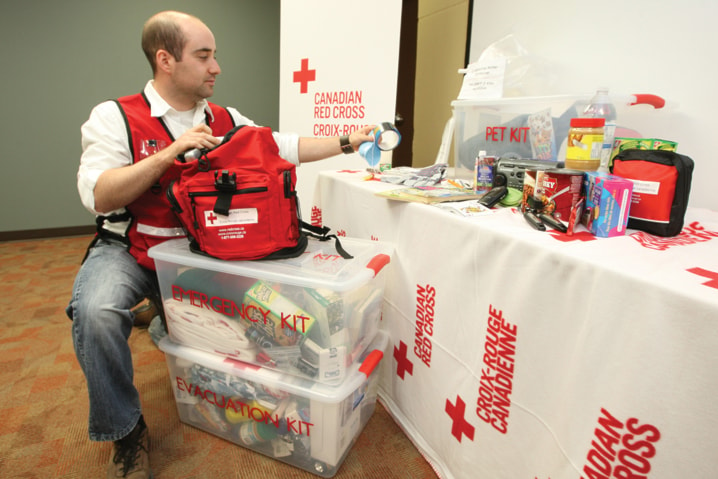Disasters in Central Alberta — they have happened before and they will happen again. The question is: Are you prepared?
Central Alberta is susceptible to hurricanes, tornadoes, severe storms and floods. Fires or freak accidents, like the 2001 anhydrous ammonia spill, can occur out of the blue, too, resulting in states of emergency where leaving one’s house, or staying in it, might not be possible and water and electricity may not be available.
May 5 to 11 is Emergency Preparedness Week in Canada. The week is designed to get citizens thinking about how to handle disasters before they happen.
There are three main components to emergency preparedness: knowing the risks, making a plan, and making an emergency preparedness kit.
Emergency personnel are often swamped in the days immediately following a disaster, making individual preparation key. The City of Red Deer suggests residents should be prepared to take care of themselves for at least 72 hours after a disaster.
“Taking a few hours to have a plan can make the difference between being scared and being prepared,” said Karen Mann, the city’s emergency management co-ordinator.
Canadians by and large are not prepared to deal with disasters. One-third of Canadians have disaster preparedness kits in their homes. And one-third not only don’t have a disaster kit, they have no food or water stores at all.
Only six out of every 10 Canadians report having enough food and water in their homes to last for 72 hours in the event of a disaster.
An emergency kit should include flashlights, a battery or crank radio, water (at least two litres per person per day), non-perishable food and a can opener, a first-aid kit and prescription medications, a small amount of cash, and copies of important documents. The supplies should be enough to cover a three-day period.
Provisions for family pets should also be included in a kit.
Other preparedness suggestions include taking photos or videos of your home or business to help with the claims process in the event of a disaster and personal loss.
Kits should be lightweight and easy to carry, said Leigh Baker of the Red Deer branch of the Red Cross.
“When we’re teaching people about being prepared for disaster and building a kit, we do ask that it be somewhere that’s convenient to remove it from the home. It should be portable,” she said.
The Red Cross and other non-profit groups offer emergency preparedness kits for about $60. The kits can also easily be made at home.
For more information on disaster preparedness, visit www.getprepared.ca.
mfish@www.reddeeradvocate.com
